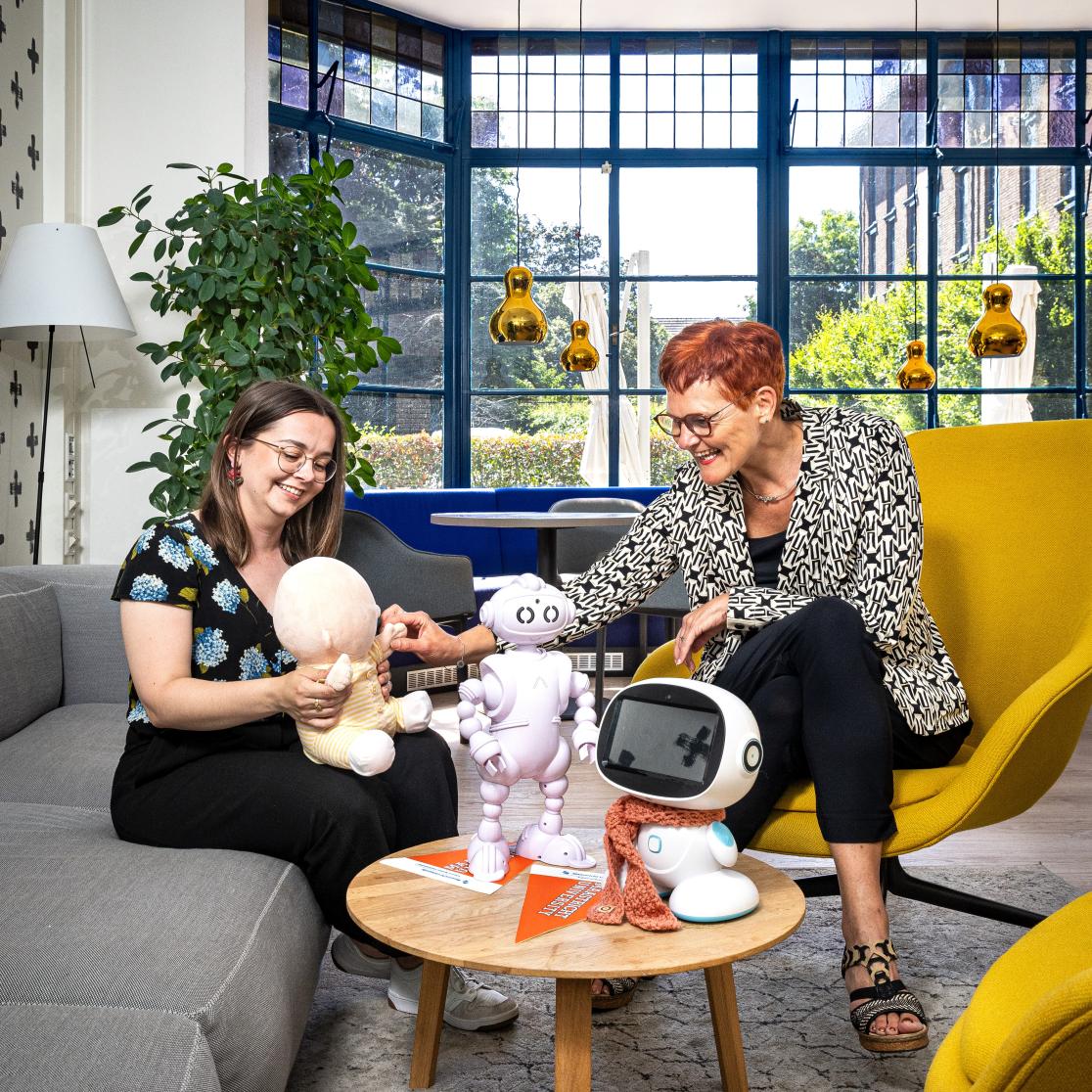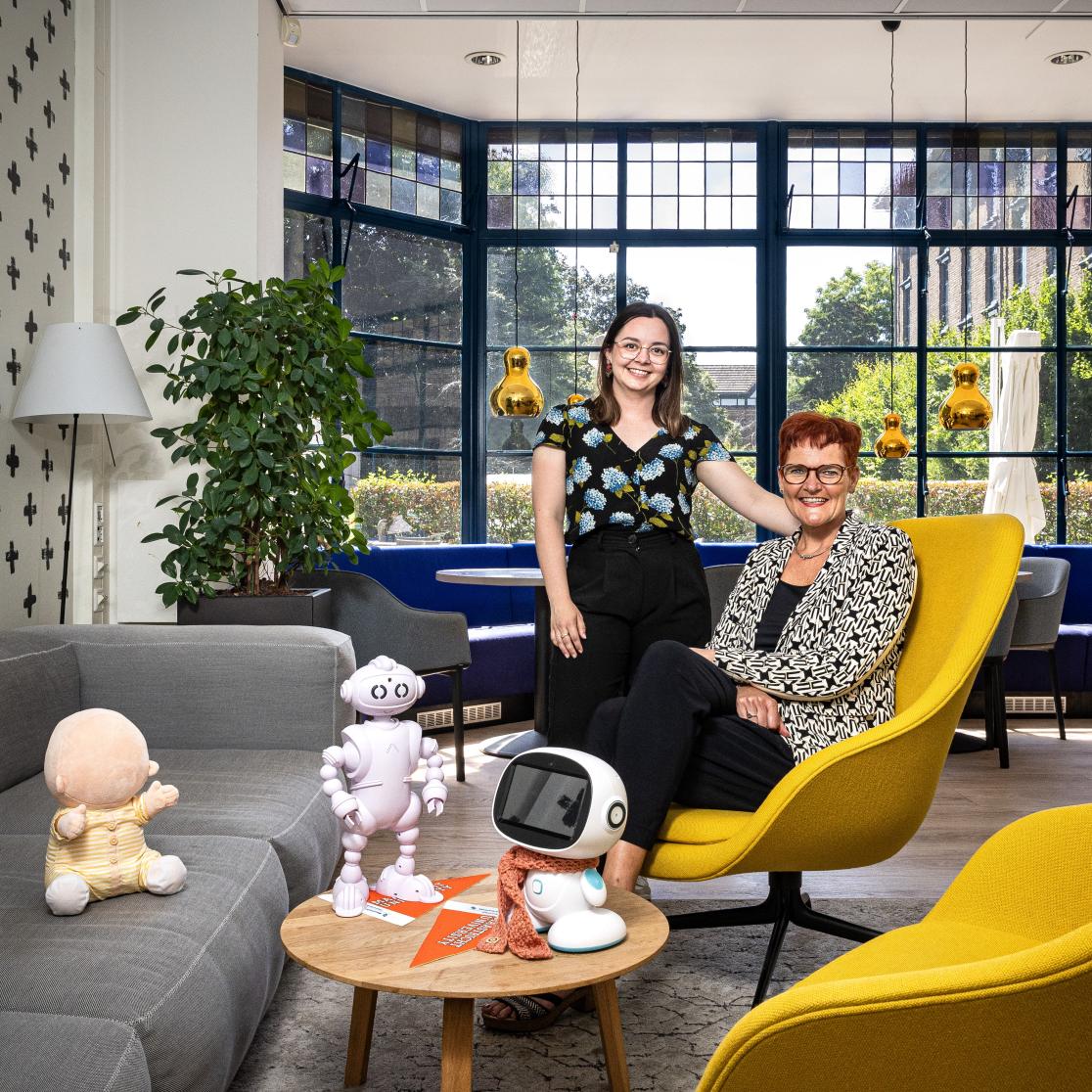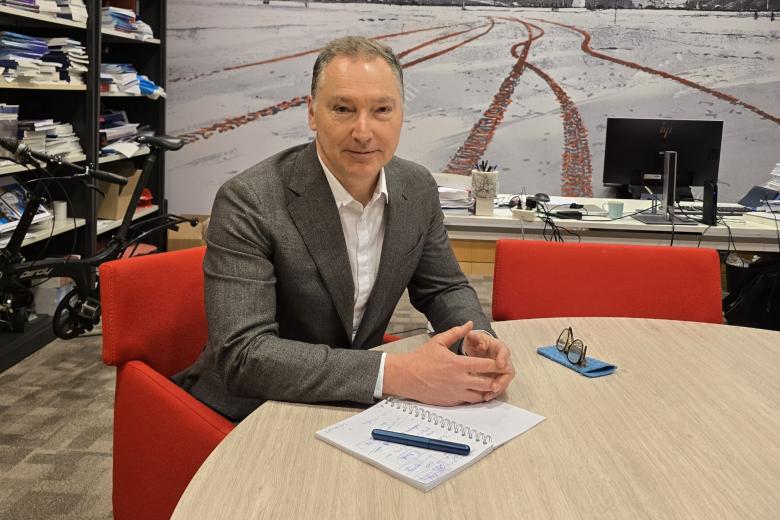The rise of service robots
Robots are on an unstoppable march in healthcare, restaurants, airports and shops. The various research projects at the Maastricht Center for Robots at the School of Business and Economics focus on the interaction between service robots and humans. One of these projects was conducted by Chelsea Phillips, a PhD candidate from Australia. Supervised by Gaby Odekerken-Schröder and Dominik Mahr, she studied the use of service robots, which are designed to assist people.
Whether we like it or not, robots will be a fixture of everyday life in the future. “No doubt about it,” says Gaby Odekerken-Schröder, professor of Customer-Centric Service Science at the Department of Marketing and Supply Chain Management. “In industry, technical robots are proving their worth on a daily basis. They’re essential for automation and take over a lot of heavy and dirty work from humans. Service robots will do the same. There are staff shortages everywhere, especially in hospitality, retail and healthcare. Robots can easily take over simple tasks, and are getting better and better at what they do.
“And yes, this is a form of disruption, which can give rise to fear and uncertainty. Will a robot soon pop up at my bedside? Will I no longer be able to ask a real person in the supermarket where the butter is? At the Maastricht Center for Robots, we focus more on human behaviour than the technology itself. How do people deal with these innovations? What are the advantages and disadvantages?”
Joint degree
The professor and her colleagues conduct research in practical settings—beyond the university bubble—together with talented young researchers like Chelsea Phillips. Born and raised in Brisbane, Australia, Phillips recently completed a joint-degree programme in Brisbane and Maastricht. “It’s a PhD project conducted in two places,” she explains, “made possible by the collaboration between UM and the Queensland University of Technology. A fantastic opportunity. In Australia, I spent 18 months working on the theoretical side of service robots, and here in Maastricht I was able to see the robots at work in real life.”
Severe dementia
Phillips came to the Netherlands in autumn 2022 to conduct her empirical research. Her first ‘living lab’ was a healthcare institution in Maastricht. “A progressive healthcare organisation,” says Odekerken-Schröder, Phillips’ main supervisor. “They agreed to use a robot for people with severe dementia. It had become difficult to connect with these people, both for their families and for healthcare workers. The idea was that a service robot might be able to bring them out of their isolation.”
Stunning effect
In consultation with the Maastricht Center for Robots, the choice fell on Hiro-Chan, a robot developed in Japan. Hiro-Chan is in the shape of a baby; it has no face, but makes sounds in response to touch. Patient Miep was the first to embrace Hiro-Chan. “The effect was stunning,” Phillips says. “Miep reacted almost immediately to the noises and soon started caressing and cuddling the baby. The staff and family also reconnected with her through her ‘baby’. She was more active, started eating better. We saw more social interaction.”

Odekerken-Schröder nods. “We wanted to find out whether the robot plays a role in communication between people, in this case between the patient and the nursing staff or family. It’s up to healthcare professionals to build on that knowledge. Our findings also suggest that robots could be used more widely in healthcare. Of course, robotisation has its supporters and opponents. We’re interested in what actually happens in practice. Something I found really touching: one health worker was adamantly against it at first, but had to wipe away a tear when she saw Miep with the baby. She was able to reconnect with her.”
Waitstaff
In another study, Phillips reported to Dadawan, a Maastricht restaurant popular with students. Here, a service robot has been a permanent member of the waitstaff since 2020. “The employees and most of the customers have no problem with their robot colleague. He, she, it, solves part of the staff shortage by seating diners and waiting tables. It works fairly autonomously, but the flesh-and-blood employees decide what it does. If they see that older visitors don’t know how to deal with the robot, they serve them personally, whereas parents with small children love it. And the robot is ideal for dealing with difficult customers: it’s obedient, doesn’t get angry and never tires.”
Ask Pepper
For Phillips’ final case study, the UM library received a new colleague in the form of robot Pepper. “Students can approach Pepper with simple questions,” Phillips explains. “Where the toilets are, what the Wi-Fi code is, how to reserve a study place. These are questions that new students ask all the time and the library staff spend a lot of time on.” Odekerken-Schröder adds, “Of course, Pepper can do much more. The specialists at the Maastricht Center for Robots can train it using Chat GPT and other forms of artificial intelligence. The same holds for all service robots.”
Phillips obtained her PhD in September and has since returned to Australia. Odekerken-Schröder would be happy to see her back here. “It’s wonderful to work with such talented and driven PhD candidates. And we’re going to see more and more service robots, that’s for sure.”
Text: Jos Cortenraad
Photography: Paul van der Veer

Also read
-
UM chair Rianne Letschert nominated as informateur
Rianne Letschert, chair of the UM Executive Board, has been nominated as informateur by the political party D66.
-
Ronald Janse appointed as new dean of Maastricht University Faculty of Law
The Executive Board of Maastricht University is delighted to announce the appointment of Prof. Ronald Janse as dean of the Faculty of Law.
-
Massimiliano Simons awarded funding for innovative art–science project on hybrid plants
"Entangled Genes: Sharpening the Public Debate on Hybrid Plants” is a new artistic research project that aims to deepen societal reflection on genetically modified plants.